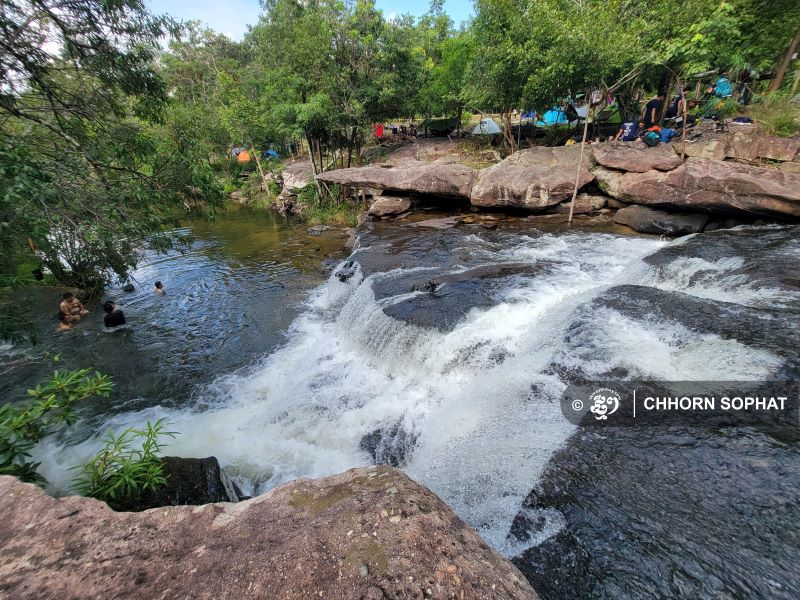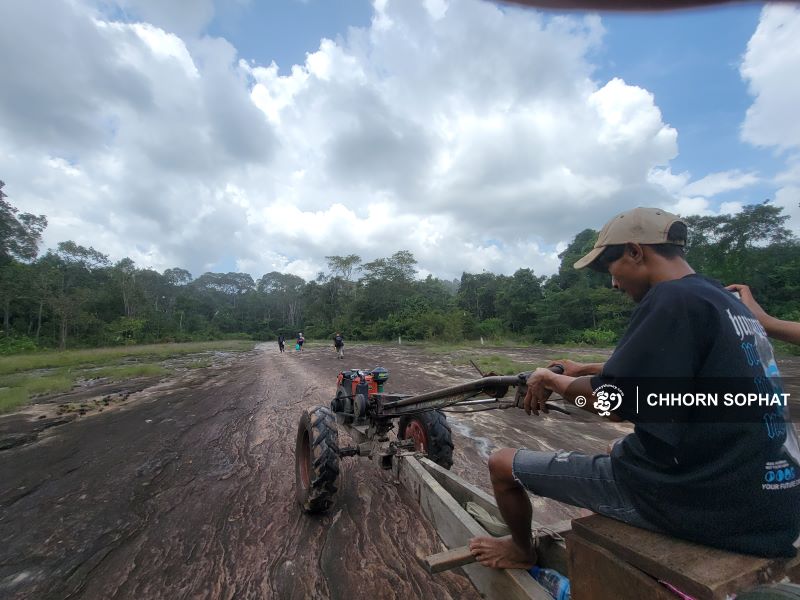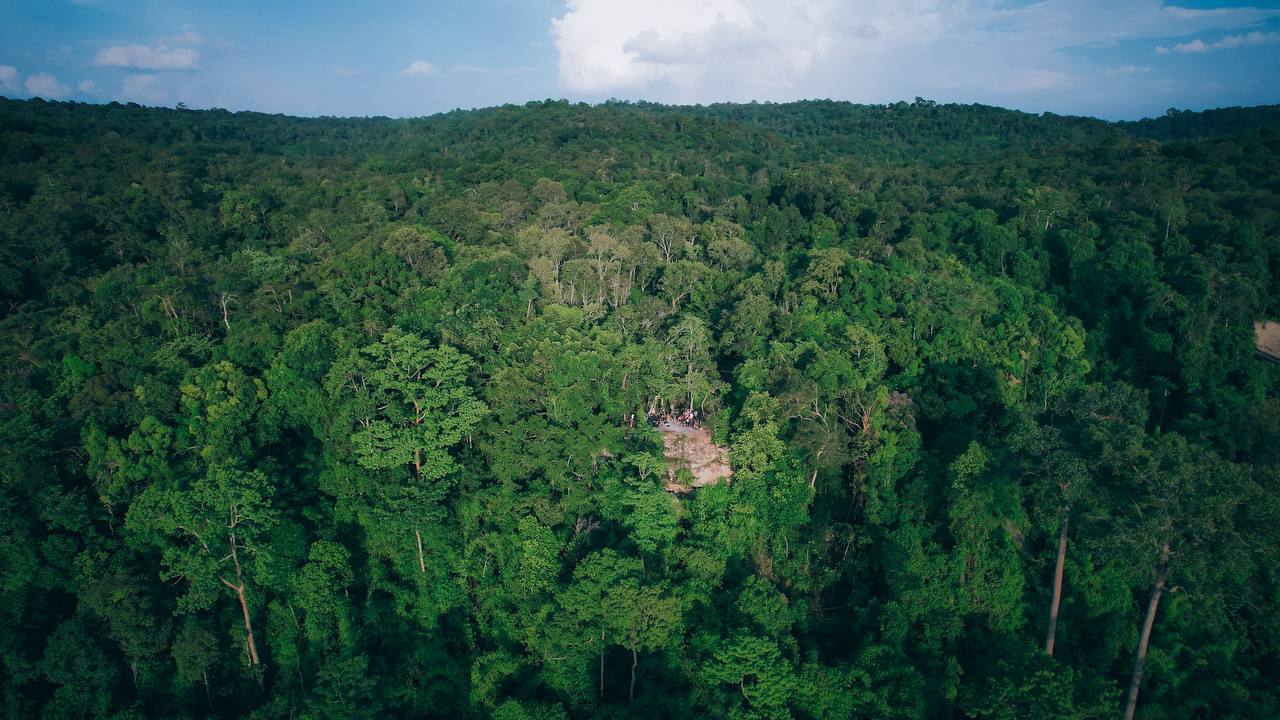Phnom Tbeng: a Sacred Land with Nature of Stunning Beauty

- By Torn Chanritheara
- September 23, 2023 11:40 AM
PREAH VIHEAR — The mountain of Phnom Tbeng offers visitors tourism facilities in a striking natural landscape of trees, waterfalls, overhangs, rocky fields and caves.
An area rich in natural resources and biodiversity, Phnom Tbeng is located 35 kilometers from the provincial town of Preah Vihear, and tends to attract visitors eager to explore. The mountain, which was declared a Natural Heritage Park by the Cambodian government in 2016, spreads over approximately 25,000 hectares across four districts: Kulen, Preah Vihear city, Rovieng and Sangkum Thmey.
Also known because of spiritual beliefs and history, the area consists of three main communities that are overseeing vast regions of protected forests: Chak Angre, Dataveok and Tangyu.
The trail in the Tangyu community offers trekkers a chance to explore rocky and zigzag turns to reach the top of the mountain. The trail is a little easier for the first several 100 meters as the slope is not steep and has small angles that make it an undemanding walk.
The last part of the trail mostly consists of wooden ladders. Recently built to replace the old ones, they are meant to make the climb easier for tourists. Still, it is a steep climb that requires energy. Don’t forget to bring a bottle of water with you.
Visitors can enjoy an array of natural sites ranging from waterfalls, overhangs and caves, to fields spreading over the horizon and wild animals. As there are many different sites, it is best to visit the region from July to November or December.
 Visitors camp next to the river where they can enjoy a refreshing swim after a day-long trek. Photo: Chhorn Sophat
Visitors camp next to the river where they can enjoy a refreshing swim after a day-long trek. Photo: Chhorn Sophat
One of the main features of the area is the Tangyu pagoda that is located six kilometers or so from the foot of the mountain. Established in 1939, its main wooden temple was built on top two giant rocks and is shaped like an umbrella.
The pagoda has been known to be the meditation place for Lok Ta Suong (Venerable Suong), a revered monk whom local people call the “Angel on the ground” and whose fame has also spread into Thailand. They believe that Lok Ta Suong, who passed away in 1979, possesses special powers that can heal or bring happiness.
Before reaching the pagoda, tourists may stop at the Chak Angre Waterfall. People can swim in the cold water—which is refreshing after climbing the mountain—fish, do bird watching, or simply relax while enjoying the scenic view. Between July and December, the 5-meter high waterfall is at its highest level, which can be spectacular. This is also the best spot for camping. Tourists can bring their own food or get food that the community especially prepares for visitors.
And they can watch the sunrise or the sunset over the Veal Thmor Rohaeng or Thmor Huot areas, which is truly beautiful.
If visitors wish to explore beyond the Tangyu area, they can trek in the territories of nearby communities where there are many more breathtaking landscapes and sites with small trails to walk or visit by walking tractors, which are modified forms of transport one can rent.
Since the sun can be scorching during the dry season, the rainy season is recommended as this enables visitors to enjoy a green scenery in cooler weather—cooler by Southeast Asian standard.
 Visitors can be driven on “walking tractors” if they want a less physically taxing way to enjoy the scenery. Photo: Chhorn Sophat
Visitors can be driven on “walking tractors” if they want a less physically taxing way to enjoy the scenery. Photo: Chhorn Sophat
 The protected natural park of Phnom Tbeng photographed by drone at sunset spreads toward the horizon. Photo: AMS
The protected natural park of Phnom Tbeng photographed by drone at sunset spreads toward the horizon. Photo: AMS















